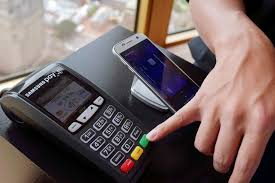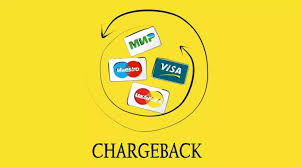Chargeback is a procedure involving the dispute of a payment made by a bank card, which does not suit the payer.
This need may arise when there is a conflict between the buyer and the seller regarding non-receipt of goods, or non-provision of services, or dissatisfaction with the quality of service. A situation may also arise when fraudsters interfere with the bank operation.

How Chargeback Works
The refund procedure for buyers has the following algorithm:
- applying to the bank with a statement for a refund to the card or payment account for the erroneous operation for dispute, the return period is 120 days;
- the bank conducts a check for possible violations by the payer when purchasing goods or services; after this, using the payment system, it is determined if it is technically possible to return this money;
- if the result is satisfactory and the check is approved, the seller is initiated to return the money to the customer's card or account;
- the seller can voluntarily return the money to the same card or disagree with the claim by providing evidence for the decision to cancel the chargeback.
- in the best outcome, the bank is obliged to return the money to the payer's account, in the worst case - the payer may have to pay the bank compensation for the time spent considering their appeal.
For the seller, it works as follows:
- receives an email notification that a financial claim has been filed against them for a specific operation, with case details available in the letter;
- in the absence of a refusal, it is recommended to independently return the money to the client-buyer to their bank account;
- if the process is lost, the seller additionally pays the bank compensation for disputing the process.
To dispute the chargeback process, it is necessary to gather the information indicated in the letter and send it to the bank, where a decision will be made, the result of which will be communicated in the personal account or by email.
Refund Through Chargeback
Chargeback is activated in cases of fraudulent operations, erroneous authorizations, consumer disputes, or mistakes.
If one of these cases arises, it is better to contact specialists, they will help resolve the issue:
- Analyzing the situation will help explain whether the chargeback operation is possible, a specialist assistant may have different knowledge, both in legal and financial fields. Knowledge in the area of blockchains and cryptocurrency is also important.

- Various technologies can be used to achieve the goal, from specially developed personal software products to communication with financial organizations.
- Out-of-court and pre-trial resolution of the issue - the ability to resolve the issue without taking it to court, also within the capabilities of specialists. But, if it becomes difficult, legal assistance does not hurt.
Disputed Transactions and Chargeback
Disputed transactions can happen to anyone. Whether it is an erroneous payment or a money transfer when making a payment from card to card, it is necessary to be attentive when entering card numbers, account numbers, and other details.
If there is dissatisfaction with the service provided, which was paid for in advance, then the chargeback procedure comes into force.
If the money was transferred to a card or by money transfer, the bank is obliged to accept the application and respond by investigating the payment and filing a return request. To justify the chargeback, it is necessary to have documents confirming this operation:
- Receipts,
- screenshots of correspondence,
- screenshots of the money transfer in banking or personal account.

Chargeback works when preliminary discussions have not yielded results and a refund is possible only with the help of bank employees.
When Chargeback Can Be Applied
A chargeback refund can be organized in such situations:
- payment for the goods was successful, but the goods did not arrive by mail;
- the seller sent the wrong item that was chosen;
- the item turned out to be defective;
- the card was charged more than agreed upon when making the purchase;
- erroneous debit by the seller;
- double charge for a purchase.

Chargeback Fraud
Fraudsters may conduct such unauthorized illegal operations as fraud when paying on a website using stolen payment data. They use them in online stores, websites, while the victim discovers a monetary operation that they did not conduct. Then the seller may receive a request for a chargeback. There is another type of fraud with chargeback, especially concerning online store sellers. The buyer can pay for the goods with their card, receive them, and then contact the bank with a statement about a transfer they did not conduct. In such a case, the seller receives a notification about the creation of a chargeback, and the fraudster gets their money back while keeping the goods.


